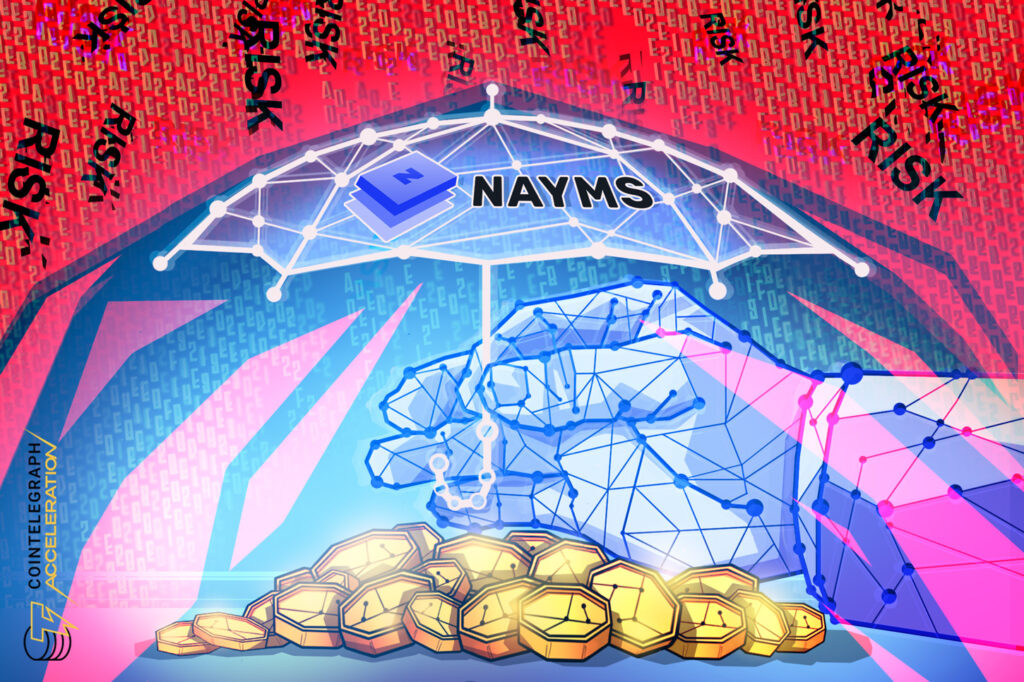30s Summary
Nayms, an insurance-focused company, is aiming to improve trust in the insurance industry using blockchain technology. The technology can verify capital, provide real-time pricing, and enhance efficiency. Nayms is also working towards making insurance a liquid, tradable asset. The company supports insurers covering digital assets, aids in risk diversification, and offers reinsurance to digital insurers. Additionally, Nayms is tokenizing participation agreements to simplify investment in insurance programs. Their NAYM token allows stakeholders to participate in decision making, such as allocating resources to different insurance programs. Future plans include launching Nayms’ own reinsurance product and exploring partnerships for yielding stablecoins.
Full Article
Trust is key when it comes to insurance, but it’s often lacking, according to Dan Roberts, who leads Nayms, an insurance-focused firm. Roberts says insurance companies too frequently use practices that aren’t exactly on the up and up when it comes to using money for claims. Case in point: last year, a $4 billion fraud case left some big insurance firms unable to verify if there was enough money available to cover claims, and the whole thing went belly up.
However, blockchain technology might offer a fix to these challenges in the insurance industry. With it, you could verify capital, discover pricing in real-time, and improve liquidity and efficiency. Roberts discussed how insurance could be held as a liquid, tradable asset, like stocks and bonds. He also talked about how Nayms could make the insurance market more fluid by providing support to insurers covering digital assets.
In case you weren’t sure, here’s a quick rundown of how insurance works. The property and casualty insurance space works on transferring risk. This is where the risk is shifted from primary insurance companies to different layers to spread out (or diversify) the pool and lessen correlation. To put it simply, when we buy home insurance for potential events like natural disasters, our insurance company takes on that risk. But, they also buy insurance for themselves, called reinsurance, to prevent large losses or a heap of losses in one place. Reinsurance companies can even buy reinsurance (called retrocession). A large chunk of the original risk, especially during massive catastrophes, ends up in the capital markets through things like insurance-linked securities.
Roberts explains that when a bunch of homes are ruined in a catastrophe, for example, insurance-linked securities can help back that event in a full collateralized way. Imagine a potential loss—for example, of $100 million—and there’s an equal amount available for immediate payouts. Capital markets can come in and provide capital against this short tail, meaning that you know there’s a loss at the end of the period and it will either be paid in full or generate a return.
Nayms provides a reinsurance layer to insurers who work in the digital arena. It can increase the limits of what can be insured and the total risk that can be covered. Roberts gave an example using DeFi (Decentralized Finance) insurance, which you can buy when you use a decentralized exchange or a bridge (protocol for moving assets between different blockchains). You’d buy this protection from your primary insurer, while Nayms sits behind them, providing the capacity to cover the risk. Roberts said that Nayms is working to build up the capacity behind all primary solutions, because in the past, insurance companies have struggled to move risk off their own books and into the reinsurance markets.
An exciting part of Nayms’ work involves tokenizing participation agreements. Basically, they’re using blockchain tech to create “insurance tokens”, which makes the entire process of investing in an insurance program super easy and quick, without any long, closed processes. They’re also looking at ways to build liquidity depth with their recently launched NAYM token. Imagine that you’ve invested in an insurance risk venture. Your profits are partially put into a pool where token stakeholders can get rewards for helping govern the use of the NAYM token.
The NAYM token itself is quite neat. It gives holders the power to say how the NAYM token is allocated to different insurance programs. For example, they could vote to support new types of coverage, address specific needs in different markets, or simply direct capital to programs with the highest potential returns.
Currently built on Ethereum with a presence on Base, Nayms is keen to explore different layer-2 solutions. They have some exciting things planned, including launching their own reinsurance product, which will streamline how they provide coverage to primary insurers. They’re also looking into partnerships with companies who can offer yielding stablecoins and other collateral that can be used against claims.

